Florida's Favorite Game Species
- Breeding = fall, winter, spring, summer
- Habitat = grassland, oak hammock, wetlands, flatwoods, scrub
- Status: [Half of Endangered highlighted]
-

Figure 1.
Credit: Reed Bowman
Scientific name: Odocoileus virginianus
Common names: white-tailed deer, doe (adult female), buck (adult male), fawn (juvenile)
Habitat: Most habitats, often along forest edges and open areas in young forest stands, oak hammocks, grasslands, and agricultural pastures.
Physical Description: Reddish-brown to grey-brown; white throat and nose band; white underbelly and underside of tail; large pointed ears; tall standing up to 6ft. Juveniles spotted. Adult males shed and regrow antlers every year. Body length ranges from 5 to 6.5 ft.
Weight: Average adult males 125 lbs.; average adult females 95 lbs in Florida.
Reproductive Rate: 200-day gestation, average of 1 fawn/year in Florida.
-
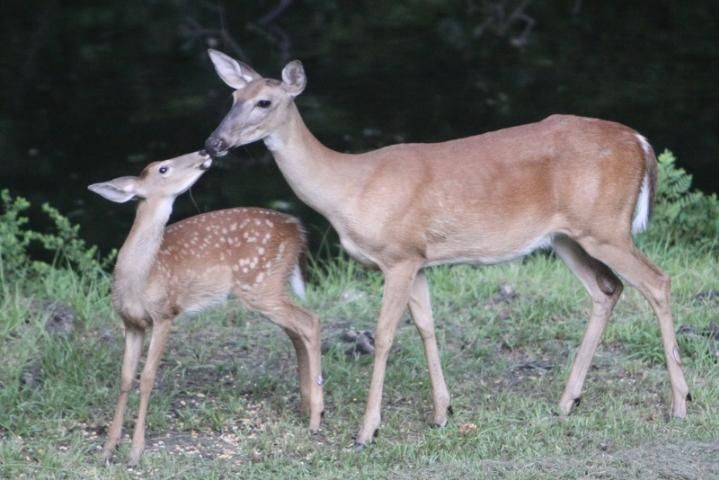
Figure 2.
Credit: Dennis Adair
Lifespan: Average 4–6 years in hunted areas and up to 10 years in non-hunted areas. Captive deer have lived for 20 years.
Dispersal & Home Range: Average annual home range of 1 mi2 for females and 2.5 mi2 for yearling and adult males. Greatest dispersal is in yearling males, who can travel up to 6 miles from their natal areas.
History: White-tailed deer are the most economically important game species in Florida. Deer in Florida have undergone major population declines and increases. In the 1700s, unregulated deer hide trade and a deer-removal campaign caused historic populations to be reduced to 20,000. After the Pittman-Robertson Act (1937) and eradication of screw worm, deer populations increased. Reintroduction of white-tailed deer by the Florida Fish and Wildlife Conservation Commission (FWC) also has helped increase deer populations. By 1985, 100,000 individuals were recorded and today an estimated stable population of 700,000 exists in Florida.
-

Figure 3.
Distribution: There are 30 subspecies of white-tailed deer in the Americas, with three in Florida. Species are taxonomically divided into "subspecies" when they are capable of breeding and producing fertile offspring but do not interbreed in nature because of factors such as geographic isolation (as is the case with the Key deer).
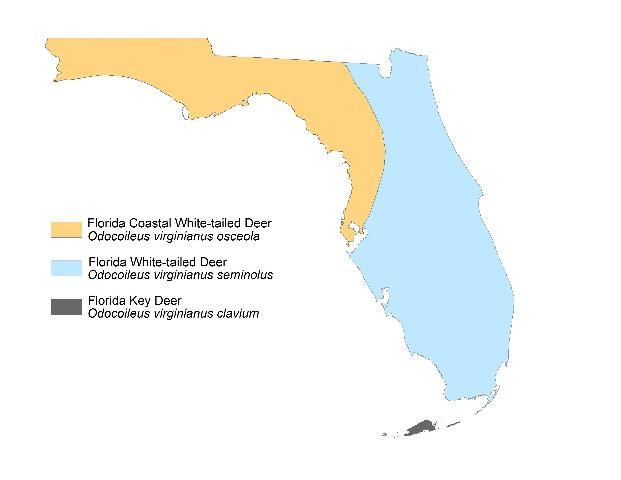
Biology and Behavior: White-tailed deer are herbivores that browse on leaves, twigs, stems, flowers, acorns, fruits, mushrooms, and aquatic plants. Similar to cattle, deer are ruminants with a 4-chambered stomach and 65 feet of intestine to process their food. The nutrient-poor, sandy soil of Florida can result in relatively low populations of deer, but agricultural areas often provide high-quality forage. Deer breeding season is commonly referred to as the "rut" and consists of three stages: the pre-rut, the rut, and the post-rut. Bucks typically spend one day with a female and then move on to find another receptive doe. Male deer reach sexual maturity at 1.5 years, and females first reproduce in their 2nd year. Mortality is primarily due to hunting with over 120,000 deer harvested annually but vehicle collision and disease can also be large factors contributing to death.
-
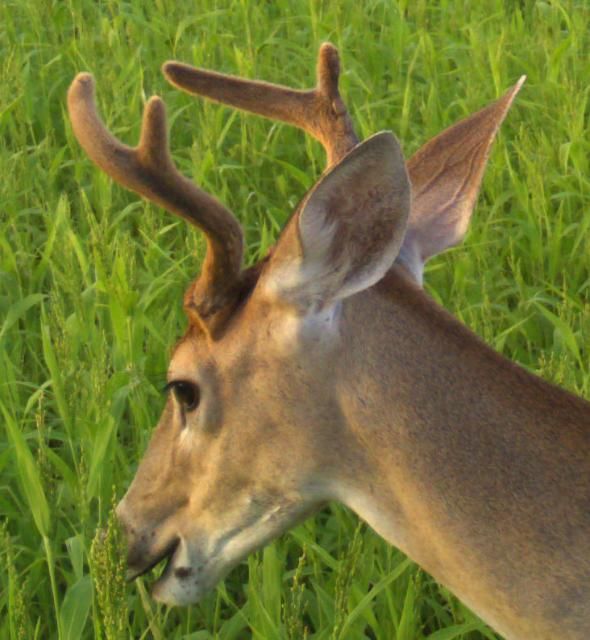
Figure 5. Increasing daylength and testosterone trigger antler growth covered in "velvet."
-
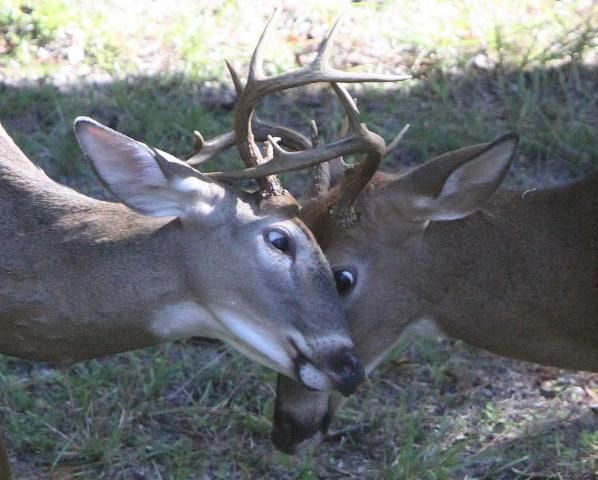
Figure 6. Bucks rub antlers to remove velvet and often spar to assert dominance. Does go into estrus.
Credit: Dennis Adair
-
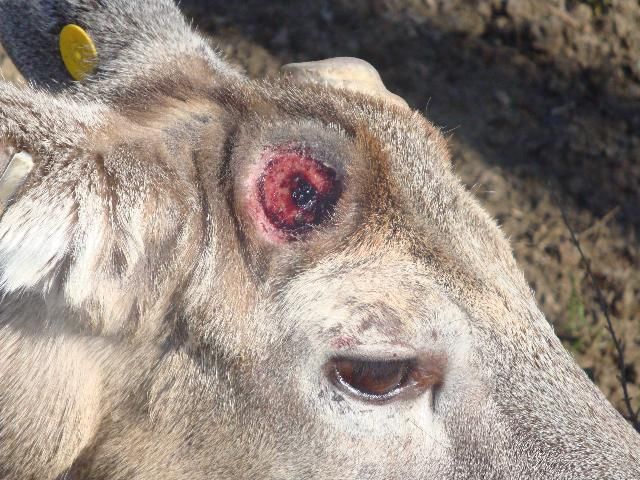
Figure 7. Antlers are shed, and new antlers start growing soon after.
Credit: Steve Demarais, MSU
Tracks and Scat:
-

Figure 8. White-tailed deer tracks
Credit: UF/IFAS
-
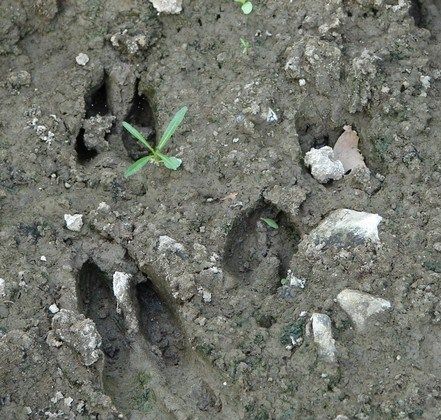
Figure 9. White-tailed deer tracks
Credit: UF/IFAS
-
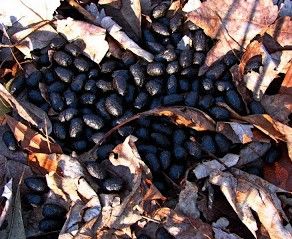
Figure 10. White-tailed deer scat
Credit: UF/IFAS
Key Deer in Florida: Key deer are an endangered subspecies of white-tailed deer that only exist in the Florida Keys. Their ancestors are thought to have crossed to the Keys via a land bridge when sea levels were lower. Geographic isolation on islands led to local adaptation, and key deer became the smallest subspecies in North America, with males weighing a mere ~ 65lbs and females ~ 55lbs. Key deer have high saltwater tolerance and low birth rates, and they are more solitary than white-tailed deer. Due to hunting and habitat loss, only 25 Key deer existed in 1955. Conservation efforts, including a complete hunting ban (1939) and the establishment of National Key Deer Refuge (1967), have aided Key deer populations to reach 700–800 individuals. In 2017, a screwworm epidemic killed a large proportion of Key deer, mostly male. Continued habitat loss and degradation are still major risks to the population.
-
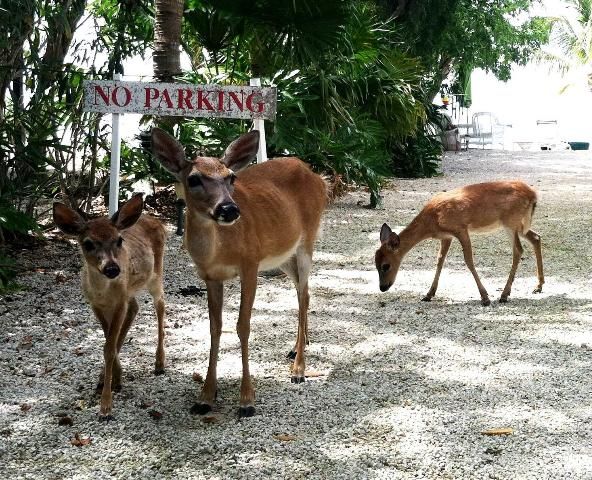
Figure 11.
Credit: Kristin Lajeunesse
Did you know?
Antler growth is one of the fastest known types of mammalian tissue growth. Antlers grow up to ¼ inch per day.
Deer Fast Facts
- The scientific name of the deer genus, Odocoileus, means "hollow tooth."
- In Florida, deer consume about 3% of their body weight each day: 2.5–4 lbs.
- Deer are crepuscular, which means they are most active at dawn and dusk.
- Deer hunting created 14,673 jobs in Florida and generated $95 million dollars in state and local taxes in 2011.
How You Can Help
- Develop a habitat management plan to maintain stable population levels of deer on your land.
- Use food plots to supplement deer feed and attract deer to an area.
- Be cautious when driving, particularly in Big Pine Key.
- To learn about Florida's hunting season and regulations, visit https://myfwc.com/hunting/deer/get-started/.
More information and factsheets at https://edis.ifas.ufl.edu